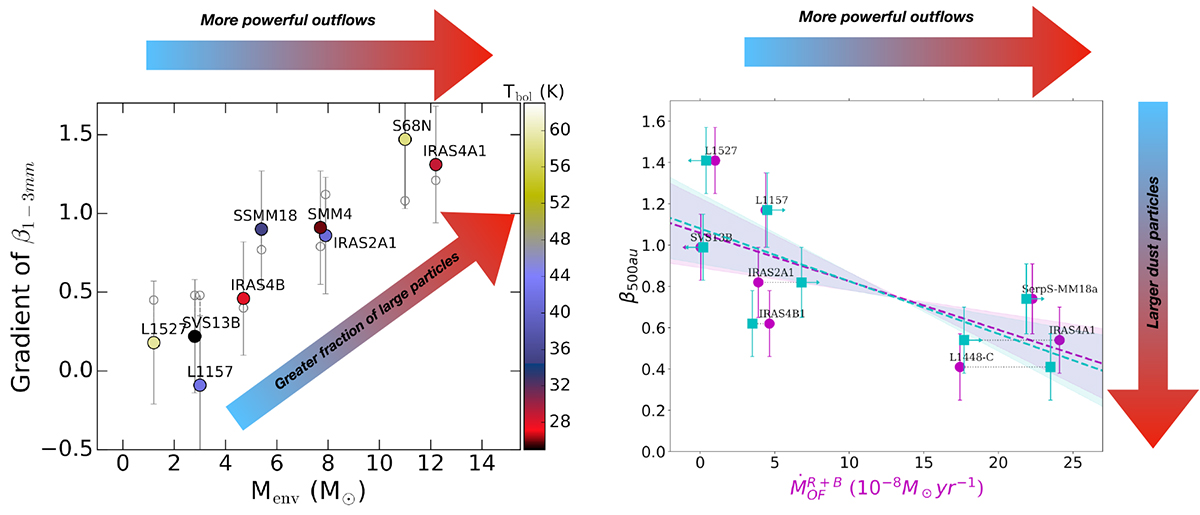Fig. 9.

Download original image
Observations of dust in the inner 500 au of extremely young protostars (aged < 0.1 My) suggest the amount of large dust particles in the vicinity of the disk could be correlated to the flux of matter transported by the protostellar outflow. Left: Figure from Galametz et al. (2019) showing that all protostellar envelopes are characterized by low dust emissivities β, with the most massive envelopes associated with the most pronounced dust emissivity radial evolution. The radial gradient of β being interpreted as tracing a greater fraction of large dust grains at small envelope radii, this correlation suggests that protostars embedded in the most massive envelopes (i.e.. associated with more powerful outflows) show a greater proportion of large grains in the vicinity of the disk. Right: Figure from Cacciapuoti et al. (2024b) showing a tentative correlation between the presence of large grains and the outflow ability to recycle material, as dust emissivities are lower in sources where the outflow strength (momentum flux expressed as M⊙ yr−1) is greater in some of these young protostars.
Current usage metrics show cumulative count of Article Views (full-text article views including HTML views, PDF and ePub downloads, according to the available data) and Abstracts Views on Vision4Press platform.
Data correspond to usage on the plateform after 2015. The current usage metrics is available 48-96 hours after online publication and is updated daily on week days.
Initial download of the metrics may take a while.


